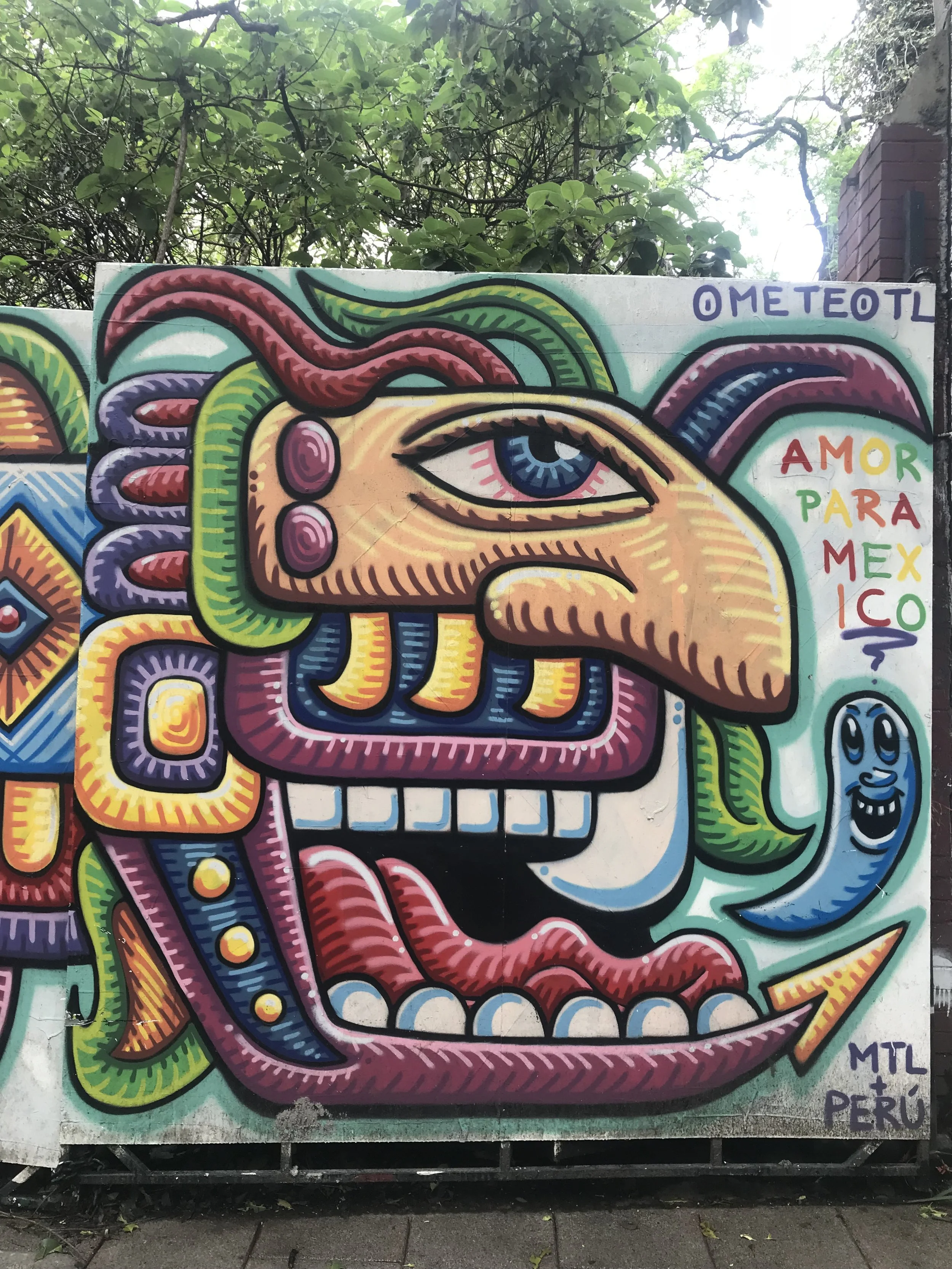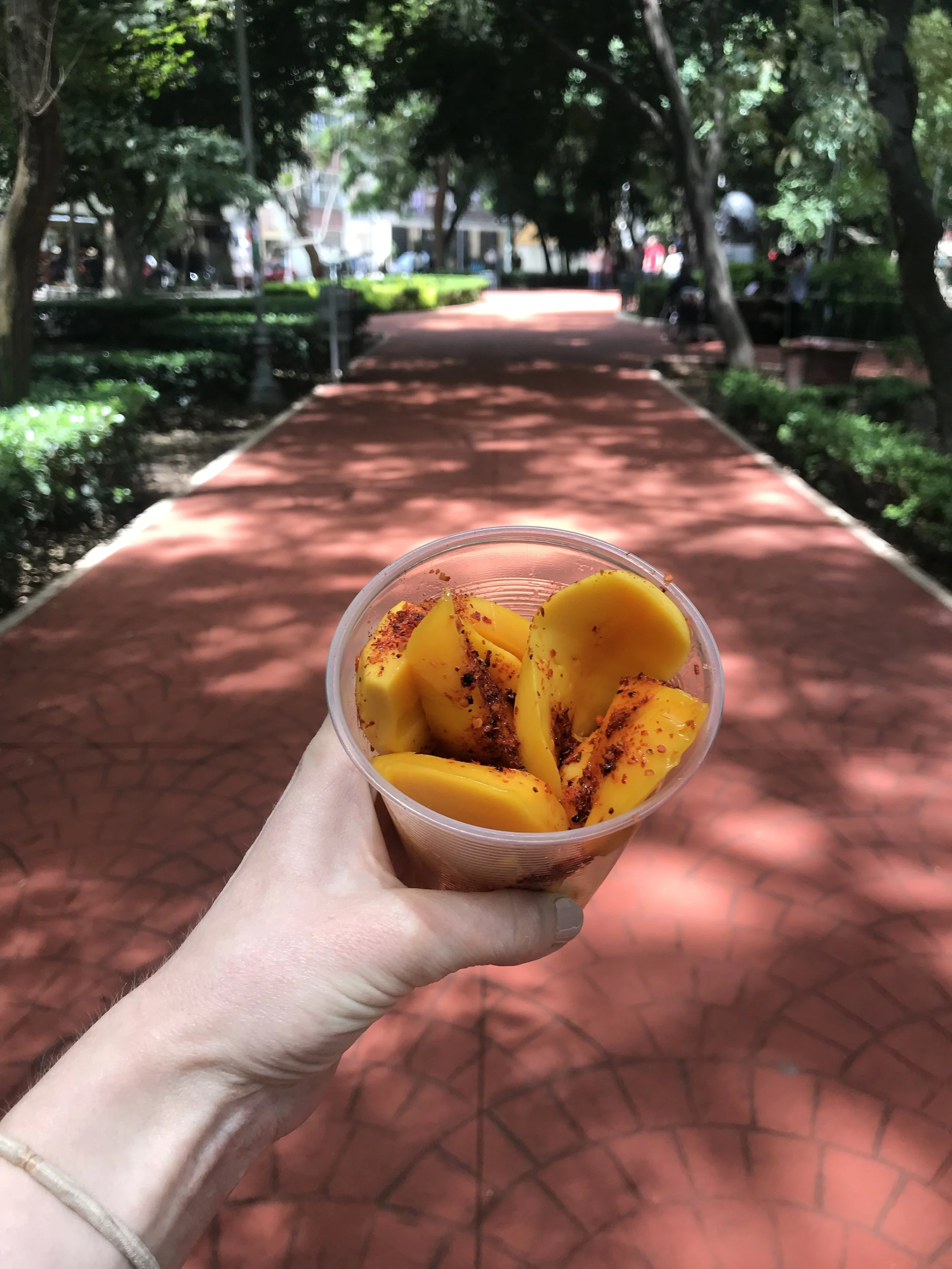5 Most Unique Adventures in Mexico City
It was a pleasure writing a guest post for the Solitary Wanderer blog! Aleah is a Filipino solo-female traveler, and her blog is filled with great stories and travel tips. Here is an expert of my writing. You can check out the full post here.
Follow the street art
IMG_8238
The Mexicans are known for their passionate forms of expression and you can see it on the streets. They wear their hearts on their sleeves and paint it for the world to see. The city is painted with a wide variety of street art, and you will typically find one on every corner.
The paintings range and include all of the influences that make up Mexico — modern takes on ancient Aztec or Mayan influences that blend with Catholic iconography or sometimes peyote trips. The symbols, passions, and priorities of the people are painted on the streets: day of the dead art, oppression, music, religion, nature, suffering and love.
They are hidden all over the city like Easter eggs. If there is a corner amiss with a mural or graffiti, the colorful houses will nevertheless make up for it.
Walk through the parks and eat mangoes
IMG_8466
As a daughter of horticulturists, I firmly believe Mexico City holds some of the most unique parks in the world. They are as lush as the city they grow in. Each park is overgrown with diverse native flora, from pine trees to cacti; their roots tangle together underground fighting for the same water. The trees are old and mighty and create expansive canopies that blanket the parks, allowing only random and soft streams of sunlight in between the leaves.
The parks don’t just harbor regional vegetation, hidden behind the layers of trees you will find avant-garde sculptures, hand-decorated shrines of Our Lady of Guadalupe, waterfalls, libraries, mosaic kiosks, and castles.
But these trees and flowers are not quarantined to just the parks. They are everywhere. Each street is shaded with large Mexican cypresses, sweet gums, or pine trees that twist and contort around the street and buildings like advanced yogis. Some areas are so densely covered with trees it feels like the city was built around the jungle. The people know that the city is too wild to be tamed. It’s like living in a tree house.
Go to Frida Kahlo’s house + Leon Trotsky Museum
Frida was a fierce and capricious woman who cultivated a home to keep her inspired. She understood that an artist must organize their space to keep them challenged yet comforted. In the neighborhood of Coyoacan, you can retrace the steps that she took every day in her house Casa Azul.
You can slowly pace around the rooms that were only big enough to hold her dreams, her pains, and ideas. You can observe her kitchen table where many philosophical conversations and fights happened between her numerous lovers and friends. Then walk through her studio overlooking her garden filled with palm trees, cacti, and ferns, and step out in the gardens themselves.
You can go up to her bedroom at look at her ceiling butterfly collection, permanently frozen in mid-flight. It hung above her head and they gently lulled her to sleep. In times of pain, she was often anchored to her bed, where she painted through her torment.
There is also an exhibit that has a selection of her clothing on display, including the body casts that she was often trapped in after a streetcar accident when she was 18. They are decorated with butterflies, tigers, communist symbols, unborn children, and stars.
It is inspiring to walk through the rooms of other fearless and adventurous women who made beauty out of their limitations.
If you are a huge history buff, you can also go to the Leon Trotsky museum, which is where he was murdered. Leon Trotsky and his wife sought asylum in Mexico City under the protection of Diego Rivera and Frida. A love affair between the Russian communist and Mexican painter quickly ensued.
Leon and his wife were kicked out once Diego realized the affair was happening, and they moved to a nearby house where Leon was later murdered by one of Stalin’s assassins. The house has been preserved as a museum that you can also walk through, and where his ghost remains.
Scream at a lucha libre fight
The only event that gets locals more riled up than football is their national sport of Lucha Libre (free wrestling). I honestly didn’t know I would enjoy lucha libre as much as I did. The theatrics are as dramatic as watching a Shakespearean play — hell it basically is one.
Each character has a backstory and rivals, lovers, and are typically part of an extended family with their own drama and history. They are almost like telanovelas (Mexican soap operas) with more stage dives, backdrops, and power strikes.
They are iconically known for their vibrant metallic masks that are influenced by ancient Aztec and Catholic myths, heroes, and symbols. Each luchador creates a mask that represents their character and helps distinguish their identity. If a luchador loses a match, they will be unmasked, revealing their true identity.
They also have luchadoras, female wrestlers, who are gaining more respect and credit in the community. The wrestlers are also often adorned with capes and boots, making them true superheroes or villains. There are matches that happen in the oldest lucha libre fighting ring Arena México on Sundays, Tuesdays, and Fridays.
Yoga in Spanish
There are several places in La Roma or La Condesa where you can do daytime or night time yoga. This is a great way to realign yourself after contouring your body on an airplane for god knows how many hours, and you get to practice Spanish.
The yoga class becomes more mentally enduring because you are listening, translating, and moving to the words more intensely than if it was in English. Although this is a bit more of a mental challenge, it is a great way to actively practice and associate the words you need to learn anyways! Arriba!
________________________________________________________________________________________
If you want more advice on what to do in Mexico City, check out my guest post with Michael Gerber about the Best Parks in Mexico City!


